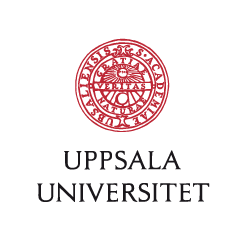 About thirty-five years ago, Stephen Toulmin wrote an article on the topic: How medicine saved the life of ethics. I think it is still worth reading.
About thirty-five years ago, Stephen Toulmin wrote an article on the topic: How medicine saved the life of ethics. I think it is still worth reading.
Toulmin argued roughly as follows:
During the first six decades of the 1900s, ethics wasn’t feeling well at all. One might say that it suffered from moral aphasia: it couldn’t talk sensibly about real ethical problems.
While moral philosophers were preoccupied with formally specifying what distinguishes moral questions and judgements in general, without taking sides on specific ethical issues, ethics debaters outside of academic philosophy were trapped in the opposition between dogmatism and relativism.
Dogmatists referred respectfully to universal principles and authoritative religious systems, while relativists and subjectivists dismissed the absolute claims with reference to anthropological and psychological findings about differences in people’s attitudes.
In short, while philosophers analyzed what characterizes morality in general and left living ethical issues to their fate, dogmatists and relativists fought fruitlessly about whether these issues have absolute answers, based on universal principles, or if the answers are relative to cultural and individual factors.
In this near-death state, medicine came to the rescue. Medical practices gave rise to very definite ethical questions that insisted on answers and guidance. When philosophers in the 1960s began to pay attention to these issues, ethics was rescued from the life-threatening condition in which it found itself.
Toulmin suggests that medical ethics saved the life of ethics through four resuscitation efforts:
By focusing on situations, needs and interests, which are more objectively given than the attitudes, feelings and desires that anthropology and psychology were interested in. Whether a person’s actions threaten another’s health can be discussed in objective terms, as opposed to questions about habits and tastes.
(Here I think of the emergence of empirical ethics, where more objective aspects of ethical problems are explored in various kinds of studies.)
By analyzing concrete cases, instead of striving towards the universal principles to which dogmatists referred. Toulmin compares medical ethics to medical practice. Diseases described only in general terms become abstract and without specific relevance: they acquire practical relevance only for health professionals who learned the art of identifying real-life cases of the diseases. The same applies to ethics, which requires an art of identifying real-life cases of, for example, “disrespect”; otherwise ethical concepts become abstract and without practical significance.
(Here I think, among other things, of the emergence of ethics rounds in the ethics training of healthcare staff.)
By focusing on professional activities, giving rise to definite responsibilities and duties. To understand our duties to each other, we cannot assume an abstract image of humans as individuals. We live in communities and act in forms of life that shape our obligations. Issues in medical ethics are often about obligations shaped by professional roles and contexts.
(Here I think of the previous blog post, about boundaries between public health and healthcare, which sometimes might be transgressed. Practices such as research, healthcare and industry shape different types of obligation and responsibility, which it sometimes can be difficult to keep separate or balance.)
By reintroducing assessments of equity and personal relationships in ethics, assessments of how the circumstances alter the cases. What, in a doctor-patient relationship, is a routine examination, can outside of this context give us reason to speak of an assault. Circumstances alter the cases, and Toulmin compares medical ethics with how courts make assessments of what is just and reasonable between people, given what we know about them.
(Here I think of how medical ethics increasingly is done in dialogue with patients, health professionals and researchers, to better understand the circumstances.)
– Why do I find Toulmin’s article worth reading today?
Among other things, because it provides a broad and realistic description of ethics as a practice and art, in time and in particular contexts, partly comparable to the doctor’s or the lawyer’s practice and art. The article also makes the development of bioethics understandable, such as the emergence of empirical ethics, of ethics rounds, and of the endeavor to work in dialogue with stakeholders and with the professions.
The article also nuances a simplified understanding of how ethical questions are answered. We are inclined to think that empirical studies give us the facts. Then we add general moral principles and derive the ethical conclusions. This could resemble a relapse into dogmatism, where religious principles have been replaced by secular philosophical principles.
Finally, I want to mention that the article sheds light on a problem that we encountered in some empirical studies lately. Colleagues have made ethical education interventions in different healthcare professions. The participants appreciated the practical exercises and found them instructive. But no clear effect of the exercises could be measured by comparing results of knowledge tests before and after the interventions.
Toulmin’s description of how medicine saved the life of ethics may suggest an explanation. The exercises were practical and concerned cases with which the participants were familiar. But the knowledge tests were formulated roughly in those general terms which constituted such a large part of the illness of ethics. The interventions might have been vitalizing, but not the method of measurement.

 Media do not generally represent the general public’s views on synthetic biology nor, regrettably, render a balanced or thoughtful picture of the field. Until now media cannot represent a starting point nor can they facilitate a public debate on synthetic biology, which would be desirable for a responsible and responsive development of the field.
Media do not generally represent the general public’s views on synthetic biology nor, regrettably, render a balanced or thoughtful picture of the field. Until now media cannot represent a starting point nor can they facilitate a public debate on synthetic biology, which would be desirable for a responsible and responsive development of the field.
Recent Comments